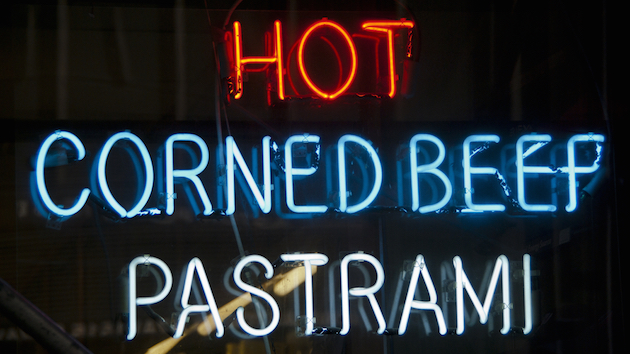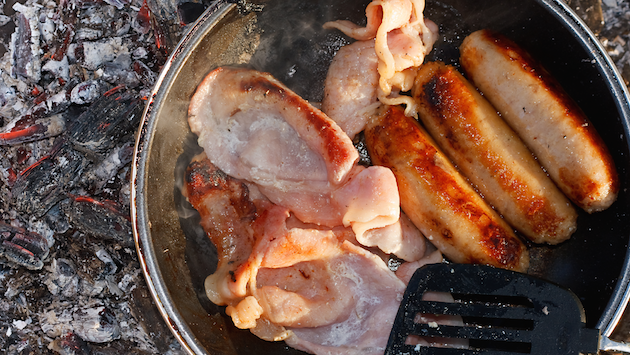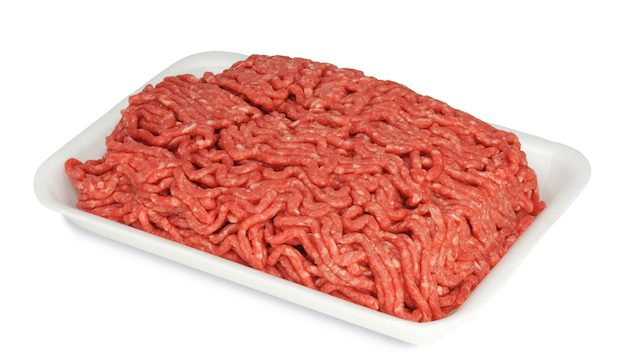
<a href="http://www.shutterstock.com/cat.mhtml?lang=en&language=en&ref_site=photo&search_source=search_form&version=llv1&anyorall=all&safesearch=1&use_local_boost=1&autocomplete_id=ig9w9pmj14b8wjl39x1&search_tracking_id=6L-5D_HEZpcgfQAJOmWRdQ&searchterm=corned%20beef%20sandwich&show_color_wheel=1&orient=&commercial_ok=&media_type=images&search_cat=&searchtermx=&photographer_name=&people_gender=&people_age=&people_ethnicity=&people_number=&color=&page=1&inline=201592865">Gregory James Van Raalte</a>/Shutterstock
US eaters have eased up on red meat in recent years, but we still rank among the globe’s top six consumers per capita of both beef and pork (more than 45 pounds of each per year). So it wasn’t very appetizing when the World Health Organization’s International Agency for Research on Cancer declared red meat to be “probably carcinogenic to humans,” and processed meat to be straight-up “carcinogenic to humans.”
The news reverberated throughout global media, and gave US editors the opportunity to work the click-grabbing word “bacon” into headlines. So here are a few important things to know about the connection that the group found between meat consumption and cancer.
-
Processed meat isn’t just hot dogs and bologna. The category encompasses meats that that have been “transformed” to preserve shelf life, including everything from Oscar Mayer bologna, hotdogs, and bacon to the famed hams from acorn-fed pigs raised in Serrano, Spain. The pepperoni on your pizza counts as processed, as do the ham and “bacon dippers” in Lunchables” and the cured sliced turkey that fills thousands of sandwiches daily.
-
Eating a relatively small amount of processed meat can significantly up your cancer risk. Perhaps the IARC’s most jarring finding for Americans is that consuming as little as a 0.11 pounds (50 grams) of processed meat daily increases the risk of colorectal cancer by 18 percent. Colorectal cancer is the second-leading cause of cancer deaths in the United States. Nearly a quarter of the total meat we consume is processed, a 2011 study found. If that holds for the approximately 200 pounds per capita of total meat we now consume, that means the average American eats about 0.12 pounds of processed meat daily—about three thin bacon slices. The IARC report is telling us: that’s enough to significantly boost risk of a particularly gruesome cancer.
- Still, we’re talking about relatively low risks overall. Colorectal cancer is common—the lifetime risk of developing it is about 1 in 20, and about 93,000 Americans contract it each year. But meat eating is just one of its risk factors. In an FAQ, the IARC reports that “about 34,000 cancer deaths per year worldwide are attributable to diets high in processed meat.” As for red meat, the associations aren’t as strong (which is why red meat counts as just a “probable” carcinogen), but if they do pan out, then high-meat diets “could be responsible for 50,000 cancer deaths per year worldwide.” By comparison, IARC notes, smoking causes 1 million cancer deaths annually, alcohol causes 600,000, and air pollution causes 200,000. So your drinking habit and smog-huffing urban existence might be putting you at higher risk than that lunchtime pastrami sandwich or bacon cheeseburger.
- But that doesn’t mean you should buy the meat industry’s wholesale rejection of the IARC’s conclusion. “It was clear sitting in the IARC meeting that many of the panelists were aiming for a specific result despite old, weak, inconsistent, self-reported intake data,” Betsy Booren, vice president of scientific affairs for the North American Meat Institute, a trade group representing the nation’s large meat processors, said in a press release. “They tortured the data to ensure a specific outcome.” That’s ludicrous. The IARC convened a highly respected group of 22 scientists from 10 countries who assessed “800 epidemiological studies that investigated the association of cancer with consumption of red meat or processed meat in many countries, from several continents, with diverse ethnicities and diets.” Its conclusion on the links between meat and colorectal are quite well accepted.
- Scientists are urging the US government to make a declaration similar to the IARC’s. Earlier this year, a scientific panel convened by the US Department of Agriculture concluded that “diets that are higher in red/processed meats…are associated with a greater colon/rectal cancer risk.” Other foodstuffs that inspired the same conclusion included “French fries/potatoes” and “sources of sugars,” like sodas, sweets, and dessert foods. Indeed, the USDA’s 2010 guidelines acknowledge a “moderate” association between the “increased intake of processed meats (e.g., franks, sausage, and bacon) and increased risk of colorectal cancer and cardiovascular disease,” although they don’t mention red meat in that context.
- The meat industry is doing its best to make sure the feds don’t warn Americans about the link between meat consumption and cancer. Negotiations over updated USDA guidelines, due to be released this year, are now being subjected to relentless lobbying from the meat industry. The industry’s processing and livestock arms spend more than $6 million annually lobbying the federal government, and between $8 million and $10 million financing elections. The vast majority of the industry’s campaign spending goes to Republicans, and predictably, US House Republicans have furiously pushed back against efforts to include “eat less meat” advice in USDA guidelines.
- The science on exactly why meat consumption is linked to cancer remains murky. One unsettling thing about the IARC’s assessment is that the group acknowledges that “it is not yet fully understood” why red meat or processed meat consumption seems to boost colorectal cancer rates, though it mentions that both contain potentially carcinogenic chemicals that form during meat processing or cooking, like nitrite-related compounds in stuff like bacon and hydrocarbons in cooked meat. Susan Gapstur, the vice president of epidemiology for the American Cancer Society, told me that these compounds can lead to “oxidative damage in the gut,” leaving us vulnerable to cancer.
The IARC’s assessment doesn’t mean we should eliminate red meat, sausages, ham, etc.—these are valuable foodstuffs, dense with protein and other nutrients like vitamin B-12. But we’re currently eating beef and pork at rates of four times the global average and 1.5 times the global average, respectively, and much of it is processed. Gapstur’s takeaway from the report—”If you do choose to eat meat, limit your consumption”—seems eminently sensible.













